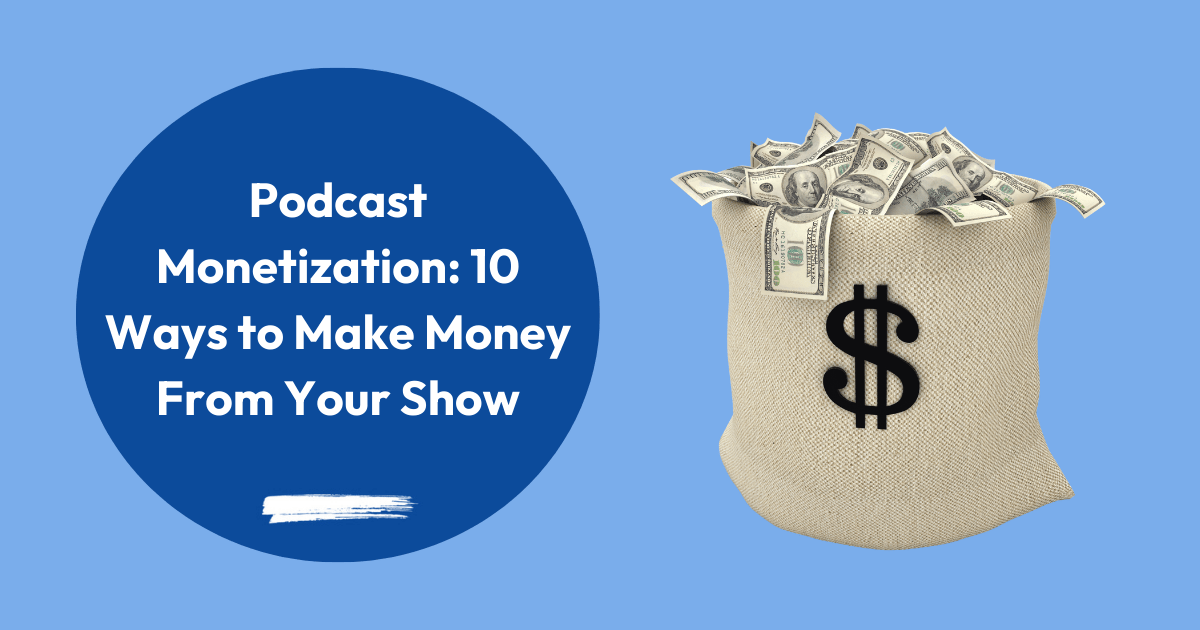
Monetizing a podcast is rarely about one big channel of income. For most creators, sustainable revenue comes from layering several small, predictable income streams. Whether you’re building your first audience or scaling an established show, the most effective strategies are the ones that align with your content, your listeners, and your operational capacity.
This guide outlines 10 reliable ways to generate revenue, along with the conditions where each model works best.
1. Host-read ads
Host-read ads remain the most trusted form of podcast advertising. When listeners already value your perspective, a direct recommendation carries more weight than a standard ad placement. A typical prices is around $20/CPM ($20 per 1000 downloads). In the book Sponsor Magnet, Justin Moore talks about establishing partnerships for host read ads instead of the CPM model.
This model works best when you have a clearly defined audience and consistent episode output.
2. Programmatic ads
Programmatic ads allow you to monetize impressions without actively selling sponsorships. They insert pre-recorded ads based on listener demographics and behavior. These pay between $3-$7 cpm. Libsyn has no download criteria for programmatic ads, and you can start immediately.
This option is useful for early-stage shows or creators who prefer automation over direct sponsor relationships.
3. Affiliate marketing
Affiliate partnerships pay you a commission for every sale driven through your link or code. They require minimal setup and work well with products you genuinely use or believe in. There are sties like impact.com, cj.com, and amazon associates.
Some companies have their own affiliate program and use tools like Rewardful. For example, Podpage has an affiliate program where you earn a commission using a special link.
The key is fit — the more aligned the product is with your audience’s needs, the better the performance.
4. Premium memberships
Premium content gives your most engaged listeners access to bonus episodes, extended interviews, or ad-free listening. Unlike ads, this model scales with loyalty rather than raw download numbers. Media hosts Captivate, Buzzsprout, and Transistor offer ways to sell a private/premium podcast.
Memberships work best when your show provides ongoing value or regular expert insight.
5. Paid communities
Paid communities turn passive listeners into active participants. This can take the form of forums, with tools like Heartbeat, Circle, Skool, or private groups focused on shared interests.
Creators often use communities to offer guidance, facilitate peer discussion, or expand learning beyond the audio. They are also a great resource for episode ideas.
6. Courses and digital products
Podcasts naturally build authority. If your audience sees you as a subject-matter expert, structured educational products — courses, templates, e-books, frameworks — can become a strong revenue stream. The above mentioned Heartbeat, Circle, have the ability to sell courses along with the community. If you want a "courses first" approach see Thinkific and Teachable.
If you're looking for a free option to prove proof of concept, check out System.io
These products are scalable and require minimal ongoing operations once created.
7. Live events
Live shows, workshops, and meetups monetize the connection you’ve already built with your audience. These can be virtual or in-person depending on your community size and location. You can sell and promote your event using tools like Ticketleap.
Events work well for creators with strong listener engagement or content that benefits from Q&A and group discussion.
8. Merchandising
Merch creates both revenue and brand reinforcement. T-shirts, stickers, mugs, or limited-run items can appeal to listeners who want to show support. Tools like Fourthwall, TeePublic, and TeeSpring
It’s most effective when your show has recognizable phrases, themes, or visual identity. Also making your items available for a limited time can boost sales.
9. Crowdfunding and donations
Platforms such as Patreon, Supercast, or Buy Me a Coffee let fans directly support your work. This model doesn’t require large audiences — it relies on the depth of connection, not reach.
It can also supplement other monetization strategies without adding operational burden.
10. Services and consulting
If your podcast showcases your expertise, listeners may hire you for consulting, speaking engagements, or client work. For many niche creators, this becomes the largest and most stable income channel. You can use a tool like TidyCal to book paid appointments
Services work best when your show already attracts listeners seeking guidance or specialized insight.
Building a sustainable revenue mix
Most podcasters succeed with a combination of two to four of these strategies. The goal isn’t to adopt everything — it’s to identify which options align with your content, audience, and capacity, then scale gradually. As your podcast grows, the most effective monetization channels will become clearer.
In the book Profit From Your Podcast, the author states, "When starting out keep in mind, you don't monetize a podcast. You monetize an audience. Step one is to grow your audience, and then monetize."
Podpage makes it easy to integrate whatever strategy you choose into your website.


